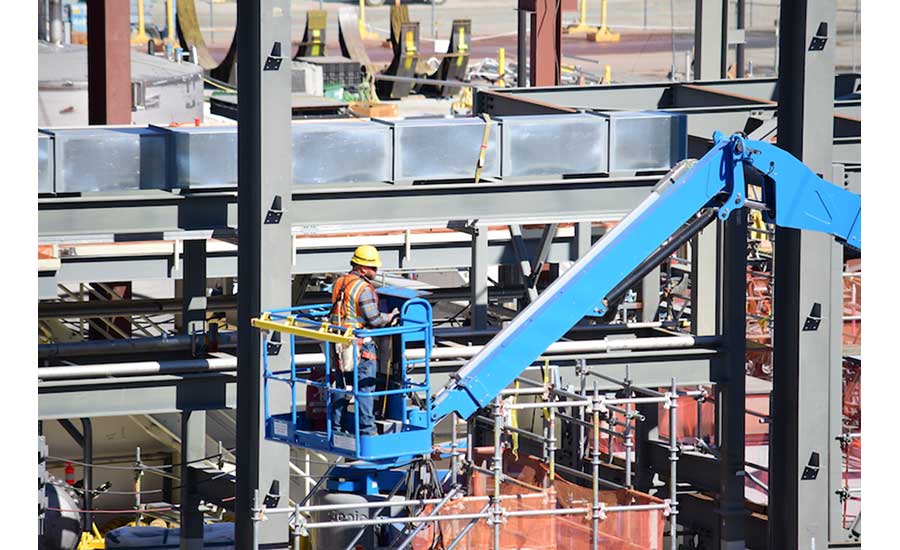Hanford Vit Plant Progress Continues on ‘Balance of Facilities’

Crews continue to work on the "Balance of Facilities" that will support the vitrification process at the Hanford Nuclear Waste Site's Vit Plant in southeast Washington.
COURTESY BECHTEL
As work continues to treat radioactive waste at the Hanford Nuclear Waste Site in southeast Washington, Bechtel has gained a milestone by obtaining permits that allow the company to finish off a section of facilities needed to support the effort.
The Washington State Dept. of Ecology has granted permits needed for Hanford’s Waste Treatment and Immobilization Plant, known as the Vit Plant, for its plan to turn waste into vitrified glass for long-term safe storage and to finish construction of an Effluent Management Facility (EMF). That facility marks the final support building needed to finalize the Dept. of Energy’s approach to directly feed low-activity waste through the system while crews continue to finalize planning and construction of the high-level waste.
The new permits enable the DOE’s Office of River Protection and contractor Bechtel National Inc. to install mechanical and piping systems inside the EMF. The work includes process tanks, pumps, prefabricated piping modules, heating, ventilation, air conditioning ducts and other equipment.
“With the major EMF concrete work complete, having the necessary permits now allows us to safely make a series of heavy-crane lifts to install major pieces of process equipment, followed by bulk installation of all remaining commodities,” Felice Presti, Bechtel’s deputy project director for the Vit Plant, says in a statement.
EMF work crews must prefabricate and pre-assemble much of the equipment and pipe rack modules outside the facility before lifting them into place inside. This schedule allows for installation work to continue inside the building, increasing efficiency of space and enhancing safety, Bechtel says.
Once crews start vitrifying operations, secondary liquids generated at the Low-Activity Waste (LAW) Facility melter off-gas system will then move to the EMF where excess water gets evaporated and transferred to the nearby Liquid Effluent Retention Facility. The remaining concentrate returns to the vitrification process.
“The permit approvals for EMF are another key step toward achieving the start of Direct Feed Low-Activity waste as soon as possible,” Jason Young, the Office of River Protection’s federal project director for the EMF, says in a statement. “We are nearing construction completion on the LAW Facility and are now working to perform startup testing on individual systems.”
The Analytical Laboratory, another key piece of the Balance of Facilities, has reached 80% of systems entering component testing and nearly half of the Balance of Facilities systems have completed startup testing and are well into the early commissioning phase, Young says.
Bechtel and the Dept. of Energy expects the Direct Feed Low-Activity Waste approach to enable treatment of low-activity waste prior to 2023 while increasing the availability of double-shell tank space.
Follow Tim Newcomb on Twitter at @tdnewcomb.
